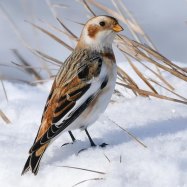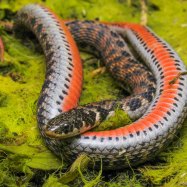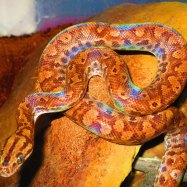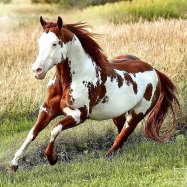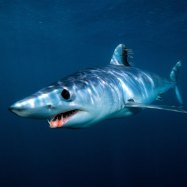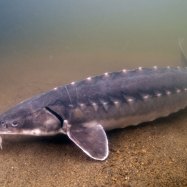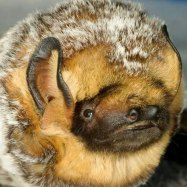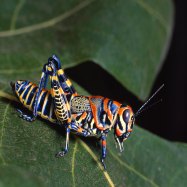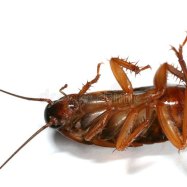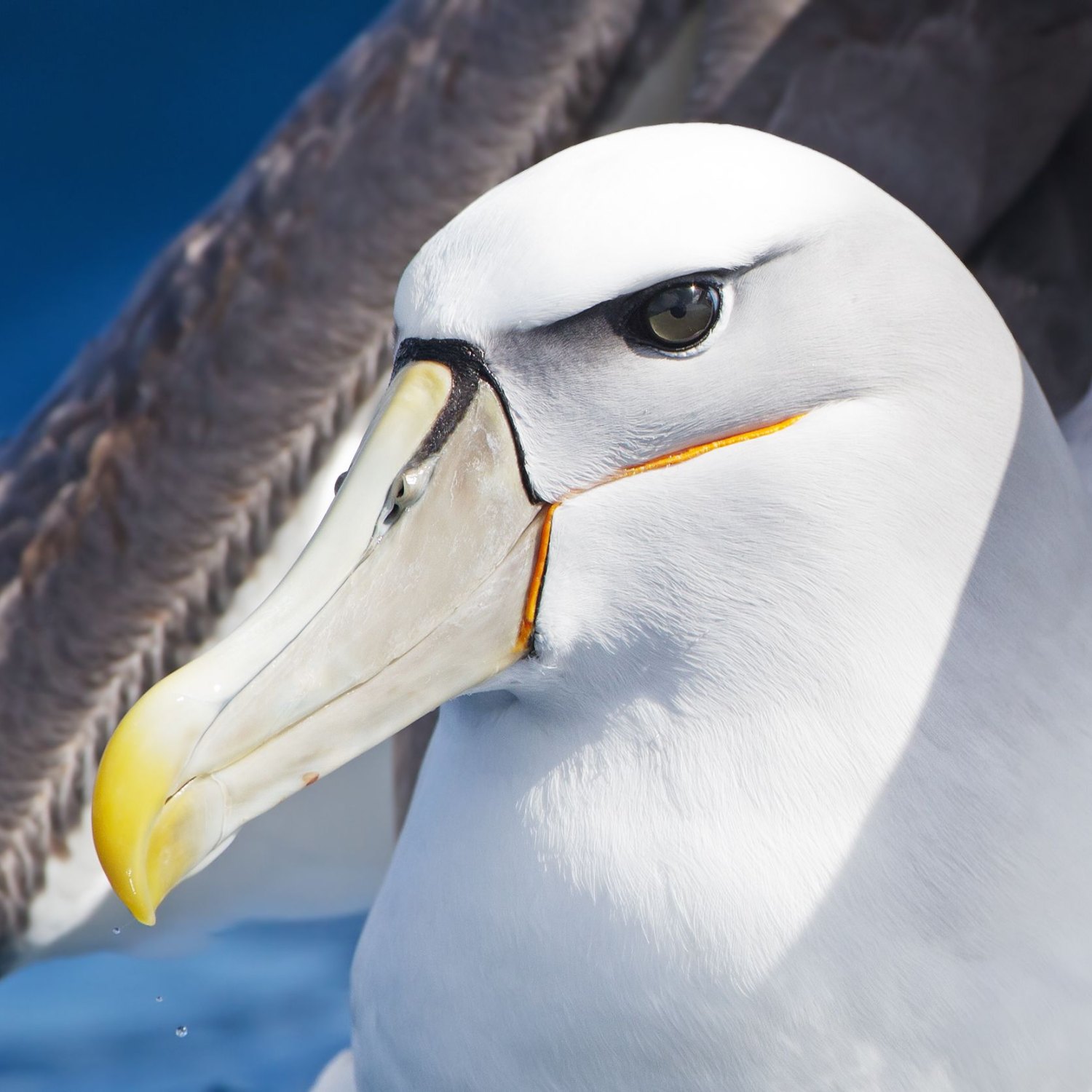
Albatross
Around 3.5 to 4.5 feet (1 to 1.4 meters)
The albatross is a majestic seabird that can be found in the Southern Ocean. With impressive lengths of 3.5 to 4.5 feet, these birds have long wings and a streamlined body, making them excellent gliders. They belong to the Diomedeidae family and are known for their graceful flying abilities. Keep an eye out for these beautiful creatures on your next trip to the Southern Ocean! #albatross #seabird #southernocean #birdwatching
Animal Details Summary:
Common Name: Albatross
Kingdom: Animalia
Habitat: Open oceans and remote islands
The Magnificent Albatross: The Largest Flying Bird on Earth
Floating gracefully above the open oceans, with its majestic white wings spanning up to 12 feet, the albatross is a sight to behold. With a scientific name Diomedea exulans, and a common name that is derived from the Portuguese word "alcatruz," meaning pelican, this fascinating bird has captured the imagination of humans for centuries.Belonging to the animal kingdom, class Aves, and order Procellariiformes, the albatross is a true marvel of nature. Let's take a closer look at this fascinating bird to understand why it has captured the hearts of many and is considered an extraordinary creature Albatross.
Birds of the Open Ocean and Remote Islands
The albatross is a bird that is known to thrive in open oceans and remote islands, making its habitat one of the most challenging and remote places on Earth. These birds often live an average of 30 to 40 years, with some even living up to 60 years. This is an incredible feat for a bird that spends most of its life at sea, never setting foot on land for years at a time.As much as albatrosses are known for their oceanic habitats, they also have a strong connection to remote islands. These birds typically return to land only for breeding and nesting purposes, making these islands their temporary home during the breeding season. They are known for their loyalty to these islands, often returning to the same place every year to nest and raise their young.
A Carnivorous Diet
One of the most fascinating facts about albatrosses is their diet. As carnivorous birds, their feeding methods include primarily feeding on fish, squid, and krill. They are known to be incredibly efficient hunters, using their keen eyesight to spot prey from high in the sky Akita. With their long, slender wings and streamlined bodies, these birds are built for effortless gliding over the ocean, making it easier for them to spot their prey.To catch their food, albatrosses have a unique method of fishing called "scanning." They skim the surface of the water with their beak, collecting small fish and squid as they go. This method allows them to catch their food without having to expend too much energy. With a wingspan of up to 12 feet, albatrosses are capable of flying for long periods, allowing them to cover vast distances over the open ocean in search of food.
Oceanic Distribution and Origin
The albatross is a seabird with a widespread distribution in all of the world's major oceans. While they are predominantly found in the Southern Hemisphere, there are a few species that inhabit the northern part of the Pacific Ocean as well. Their preferred habitats include the open ocean, especially areas with strong winds, and remote islands with cliffs and rugged terrain.While their exact origin remains uncertain, these birds are believed to have evolved in the southern hemisphere, with the majority of the 22 species found in the region. They are known to have a strong connection to the Southern Ocean, making it their primary location for breeding and nesting.
Distinctive Features
In addition to their massive wingspan, there are many other distinctive features that make albatrosses unique. These include their coloration, body shape, and size.The albatross is typically white with dark wingtips, making it easy to spot gliding over the ocean. The color of their feathers is essential for camouflage, with the white feathers helping them blend in from above, and the dark wingtips breaking up their silhouette from below, making it difficult for predators to spot them.
Their body shape is also distinct, with a large, streamlined body and long, slim wings. This design not only allows for effortless gliding over the ocean but also reduces drag, allowing albatrosses to fly for long periods without getting tired. These birds also have a hooked beak, which helps them catch their prey while scanning the surface of the water.
Statistics of the Albatross
Albatrosses are undoubtedly one of the most impressive birds in the world, not only because of their flying and hunting abilities but also because of their sheer size.An average albatross has a length of around 3.5 to 4.5 feet, with their wingspan ranging from 6 to 12 feet. Their weight can range from 17 to 22 pounds, making them one of the heaviest birds in the world. These birds also have a unique physical feature that allows them to save energy while flying - a special tendon that locks their wings in place, allowing them to soar effortlessly.
Another striking statistic about albatrosses is their strong sense of smell. They have a unique gland located above their nasal passages, which helps them navigate their way back to their nesting sites, even from thousands of miles away at sea.
The Plight of the Albatross
While albatrosses are certainly a magnificent species, they are also facing many challenges. One of the biggest threats to their population is commercial fishing, which often leads to accidental entanglement in fishing gear. This is a significant issue, as these birds often mistake floating debris for food and get caught in discarded fishing lines and nets.Other threats to albatross populations include plastic pollution, habitat destruction, and climate change. To address these issues, conservation efforts have been put in place to protect these birds and their habitats. This includes implementing regulations to reduce bycatch, monitoring population sizes, and implementing programs to clean up plastic debris in their habitats.
Final Thoughts
In conclusion, the albatross is truly a remarkable species, with its long lifespan, unique hunting methods, and impressive physical features. As the largest flying bird on earth, this seabird has captured the hearts and minds of many, and it's no wonder why. But like many other species, the albatross is facing challenges, making it essential for us to take action to protect and preserve these magnificent creatures. By understanding and appreciating their unique features, we can work towards ensuring a thriving albatross population for generations to come.

Albatross
Animal Details Albatross - Scientific Name: Diomedea exulans
- Category: Animals A
- Scientific Name: Diomedea exulans
- Common Name: Albatross
- Kingdom: Animalia
- Phylum: Chordata
- Class: Aves
- Order: Procellariiformes
- Family: Diomedeidae
- Habitat: Open oceans and remote islands
- Feeding Method: Carnivorous
- Geographical Distribution: Oceanic regions
- Country of Origin: Widespread distribution
- Location: Southern Ocean
- Animal Coloration: White with dark wingtips
- Body Shape: Large, with long wings and a streamlined body
- Length: Around 3.5 to 4.5 feet (1 to 1.4 meters)
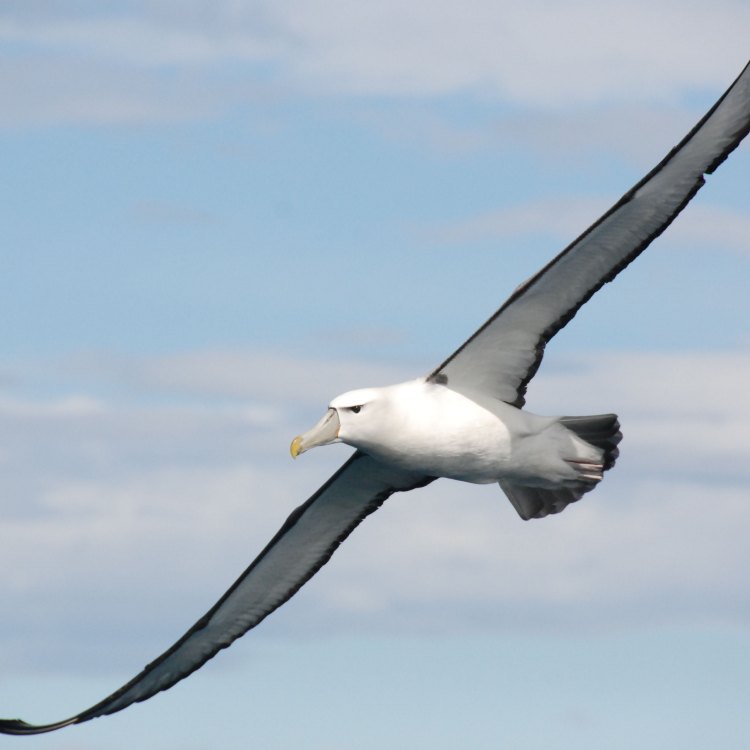
Albatross
- Adult Size: Large
- Average Lifespan: Up to 50 years
- Reproduction: Monogamous
- Reproductive Behavior: Colonial nesting behavior
- Sound or Call: Loud, distinctive calls
- Migration Pattern: Long-distance migratory
- Social Groups: Colonies and pairs
- Behavior: Highly adapted for long flights and gliding
- Threats: Human activities (fishing, pollution, habitat destruction)
- Conservation Status: Vulnerable
- Impact on Ecosystem: Important role in marine ecosystems as top predators and nutrient recyclers
- Human Use: Tourism, fishing
- Distinctive Features: Large size, long wings, and distinctive flight pattern
- Interesting Facts: Can fly long distances without flapping their wings
- Predator: Few natural predators
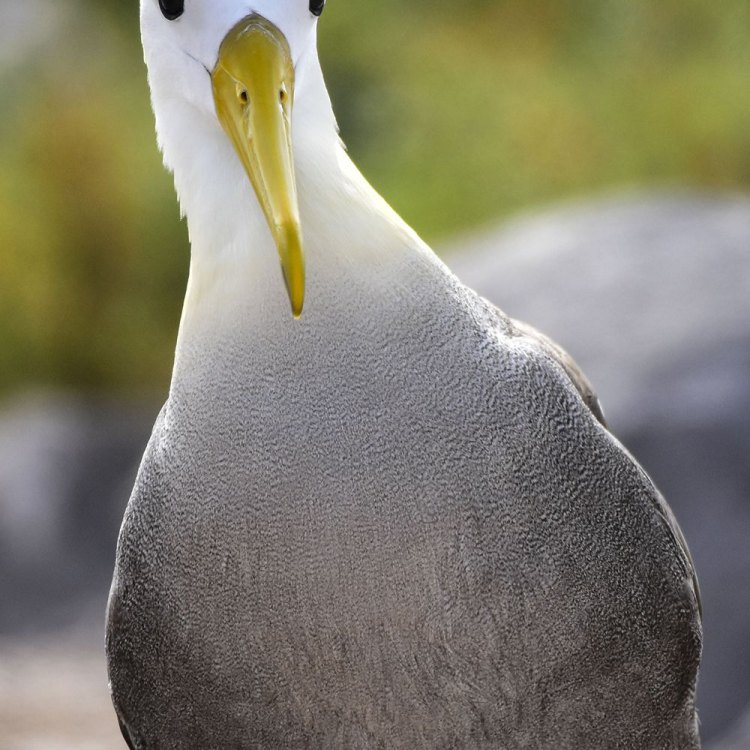
Diomedea exulans
The Incredible Albatross: A Majestic Bird That Rules the Skies
Standing tall at up to four feet with a wingspan of over 12 feet, the albatross is a truly magnificent creature. These seabirds are known for their impressive size, long-distance flights, and unique features. With a lifespan of up to 50 years, the albatross has captured the hearts and curiosity of humans for centuries. In this article, we will delve deeper into the world of the albatross, exploring its behaviors, threats, conservation status, and human use PeaceOfAnimals.Com.The Adult Albatross: A Giant of the Skies
The albatross is considered one of the largest birds in the world, with adult sizes reaching up to four feet in height and weighing up to 22 pounds. They have a distinctive appearance, with long wings that can span over 12 feet, and a streamlined body that is necessary for their long flights over the ocean.A Long and Prosperous Life
Unlike most birds, the albatross has an impressive lifespan, with some individuals living up to 50 years in the wild. This is due to their slow reproductive rate, with albatrosses typically only laying one egg every one to two years. This means that the albatross population is slow to recover from threats and may take many years to stabilize.A Monogamous Reproduction and Colonial Nesting Behavior
Albatrosses are known for their monogamous relationships, with males and females staying together for life. They have a unique courtship ritual, where they perform a dance and toss their heads back and forth, showing off their long impressive wings. This ritual is followed by a period of nesting, with albatrosses displaying colonial nesting behavior. This means that they nest and raise their young in large colonies, often consisting of thousands of individuals Alpine Goat.The Sound of the Albatross: Loud and Distinctive Calls
Listen closely in an albatross colony, and you will hear a symphony of loud and distinctive calls. These calls vary in frequency and tone, and each individual has a slightly different call, making it easy for mates to locate each other in the crowded colonies. Albatrosses also use these calls for communication with their young and to defend their nest from intruders.The Great Migration: A Long-Distance Journey
One of the most incredible feats of the albatross is their long-distance migratory patterns. They spend most of their lives at sea, only returning to land to breed, and can cover thousands of miles during their migrations. Albatrosses have been recorded flying over 650 miles in a single day, and some species can travel over 50,000 miles in a year.Social Groups: Colonies and Pairs
Albatrosses are social birds, and they form colonies during the breeding season. These colonies can consist of thousands of individuals, and they have a strict social hierarchy. Within the colony, albatrosses pair off and build their nests in close proximity to their neighbors. After raising their young, the albatrosses will return to the sea, where they tend to be solitary.A Highly Adapted Bird for Long Flights and Gliding
One of the most distinctive features of the albatross is its ability to glide for extended periods without flapping its wings. This is due to their highly adapted wings, which are incredibly long and narrow, allowing them to catch the updrafts of wind and glide for hours at a time. This unique ability helps them conserve energy during their long flights over the ocean.Threatened by Human Activities
Despite their impressive abilities and majestic appearance, albatrosses face numerous threats, mainly due to human activities. These include entanglement in fishing gear, marine pollution, and habitat destruction. As albatrosses are long-lived and slow to reproduce, these threats can have significant impacts on their population.Vulnerable Conservation Status
Due to these threats, many albatross species are listed as vulnerable on the International Union for Conservation of Nature (IUCN) Red List. This means they are at high risk of extinction in the wild. Conservation efforts are crucial to protect these birds and ensure their continued existence.A Vital Role in Marine Ecosystems
Apart from their mesmerizing beauty, albatrosses play a crucial role in marine ecosystems as top predators and nutrient recyclers. Their diet mainly consists of fish and squid, and by feeding on these species, they help regulate their populations, maintaining the balance in the marine food chain. Albatrosses also play a vital role in nutrient cycling, with their guano (feces) providing essential nutrients for marine plants.Human Use: Tourism and Fishing
Humans have had a long-standing relationship with albatrosses. Many island communities have developed cultural traditions and spiritual beliefs surrounding these birds. Albatrosses are also a popular attraction for ecotourism, with many travelers eager to catch a glimpse of these magnificent creatures in their natural habitat.On the other hand, some human activities also pose a threat to the albatross population. Commercial fishing operations have led to the accidental capture of these birds in fishing gear, known as bycatch. Additionally, albatrosses are sometimes targeted by fishermen for their feathers, which are used in various traditional crafts.
Distinctive Features: Large Size, Long Wings, and Distinctive Flight Pattern
The albatross's impressive size, long wings, and unique flight pattern make it stand out among all other birds. Its sheer size and wingspan are a sight to behold, and its gliding abilities are unmatched by any other bird. These features make the albatross one of the most fascinating creatures on the planet.Interesting Facts: Soaring Without Flapping
While we have covered some interesting facts about the albatross, there is one more that deserves special attention. These birds are capable of flying long distances without flapping their wings. This is only possible due to their specially adapted wings, which enable them to glide for hours at a time. To put it into perspective, imagine flying over the ocean for hours without having to flapping your arms – that's how incredible the albatross is!Predators: Few Natural Predators
Despite their impressive size, albatrosses have few natural predators. They are at risk of predation by sharks and larger seabirds such as skuas and gulls, especially during the breeding season when they are vulnerable while nesting. However, their biggest threat remains human activities, which can impact their population on a larger scale.In Conclusion
The albatross is a majestic bird that rules the skies. With its impressive size, long-distance flights, and unique features, it has captured the fascination and admiration of humans for centuries. However, these birds face numerous threats, mainly due to human activities, and it is our responsibility to protect them and ensure their continued existence in the wild. Let us appreciate the beauty and importance of these incredible birds and work towards their conservation.
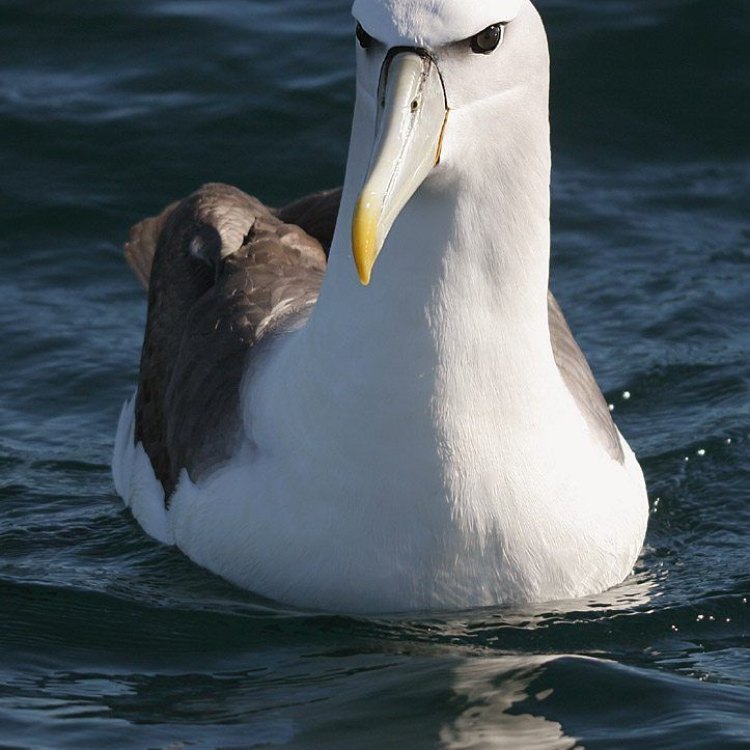
The Magnificent Albatross: The Largest Flying Bird on Earth
Disclaimer: The content provided is for informational purposes only. We cannot guarantee the accuracy of the information on this page 100%. All information provided here may change without prior notice.

